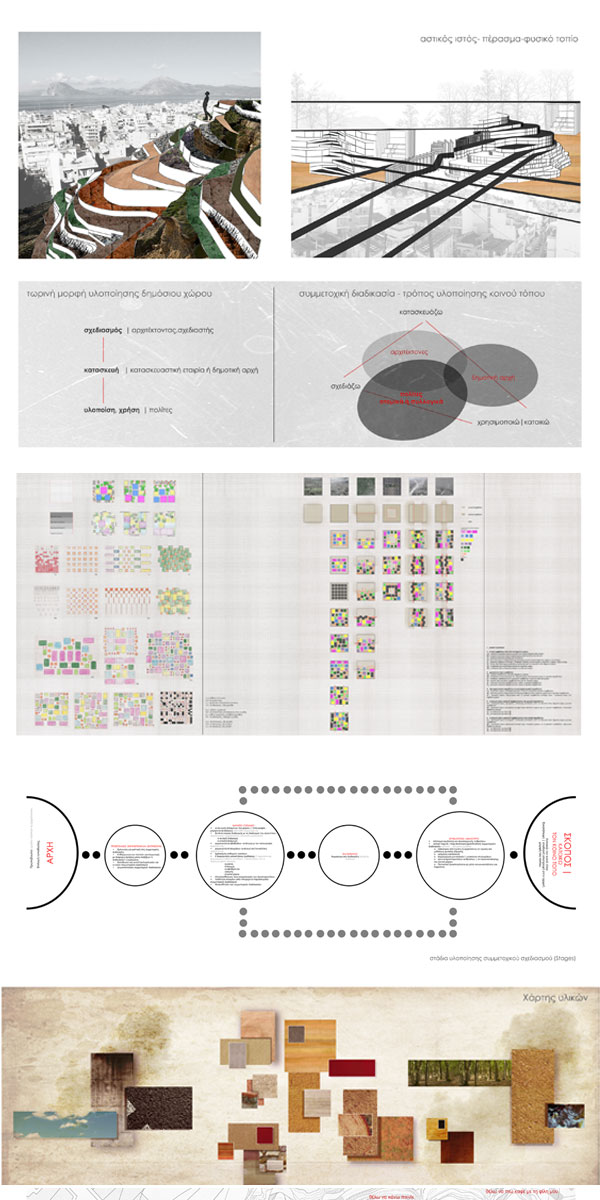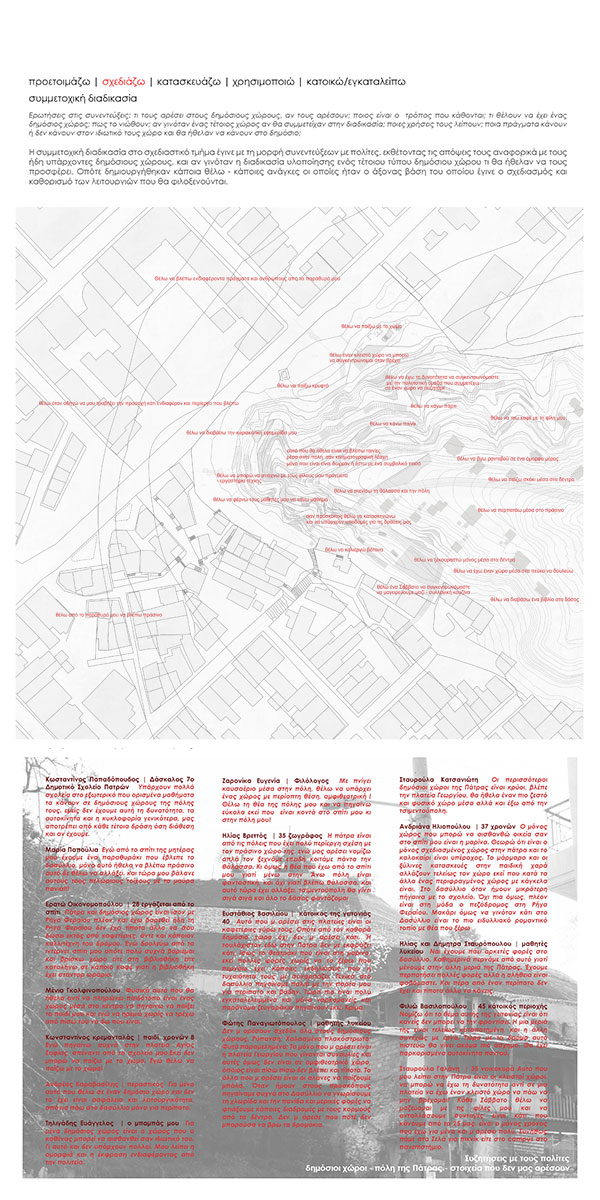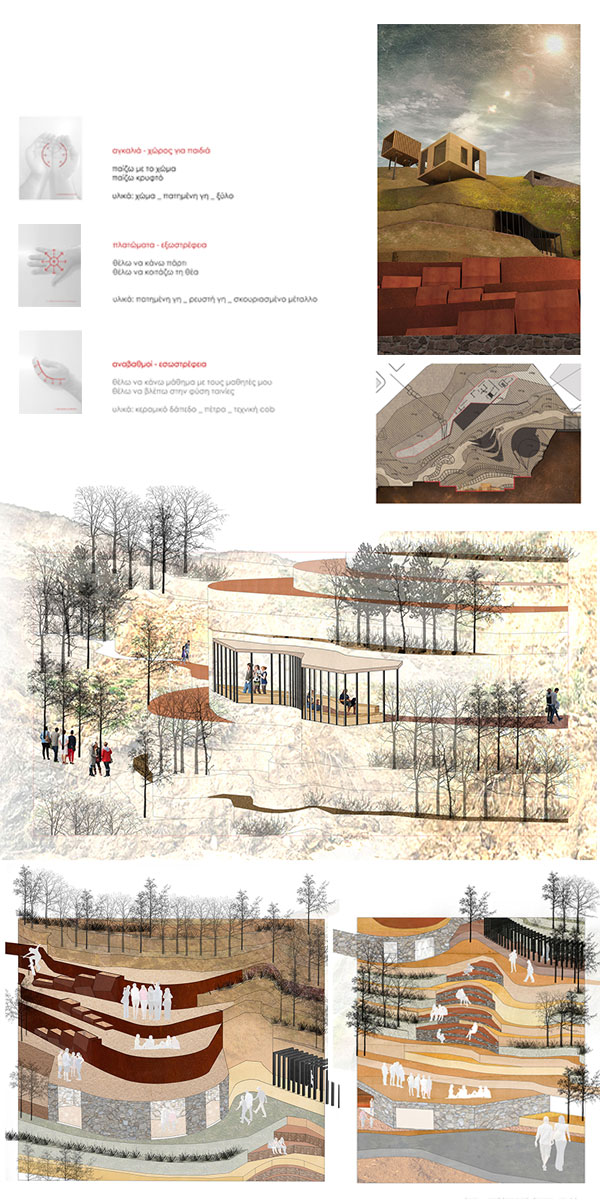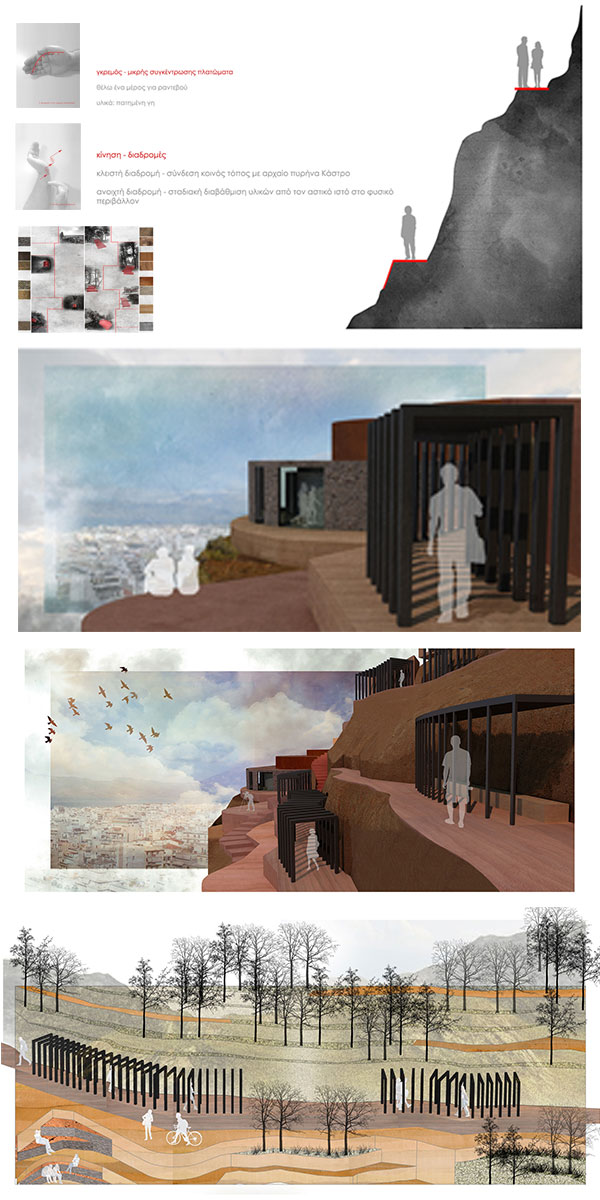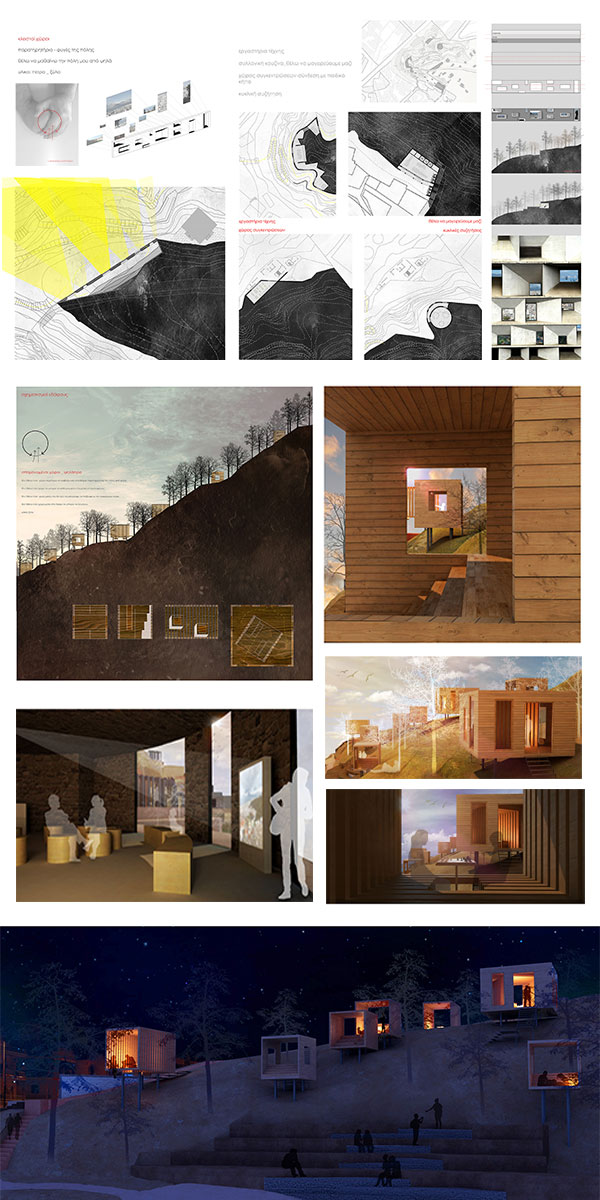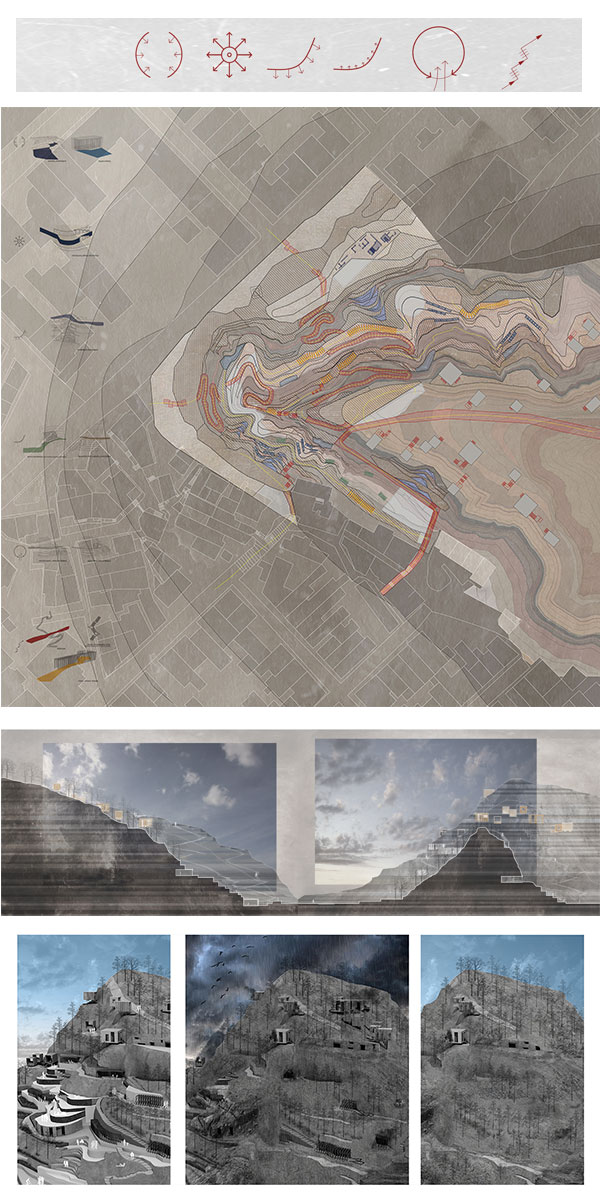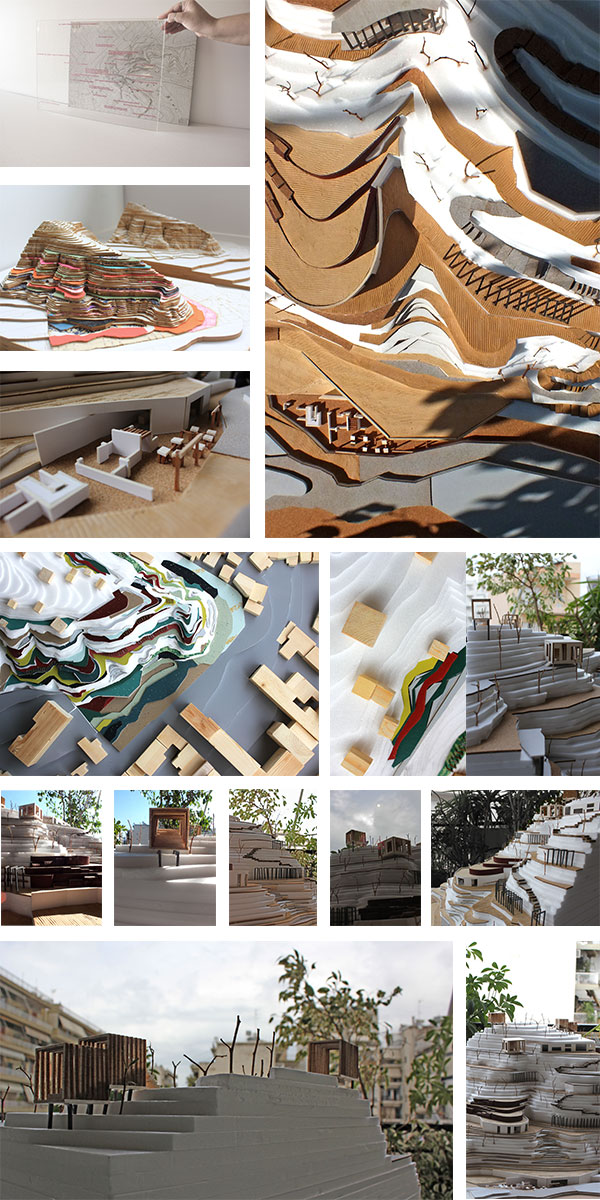STUDENTS PROJECTS
PROJECTS2015
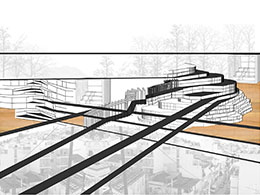
09 July, 2015
Common places |urban terraces (layers of ground)
From void... to common place | Made by the people for the people.
Student: Tiligadi Alexandra
Supervisor: Konstantinos Grivas
University of Patras - Department Of Architecture, Faculty of Engineering
Presentation Date: 26.02.2015
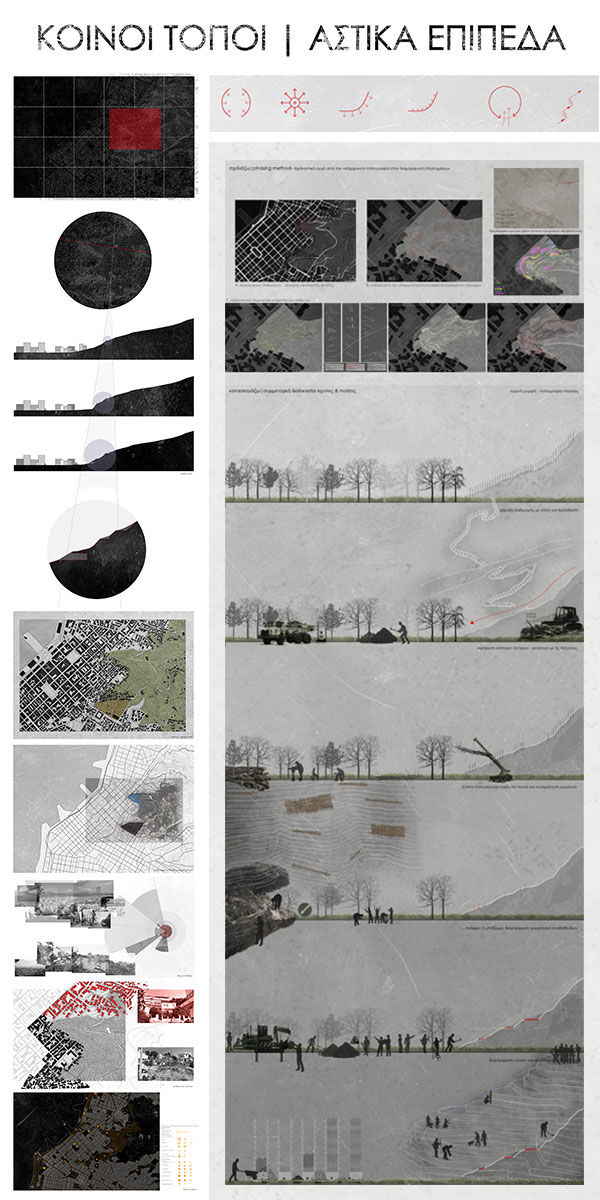
The main idea of this suggestion is the architecture and management of residual spaces between the natural and urban environment and the importance of collaborative planning for the shaping and construction of common places.
In Greece, the shortage of public spaces has resulted in the social life being focused on public spaces with commercial or private uses. It is therefore necessary to create new forms of public spaces that promote various social activities and encourage the extension of privacy in public space. We need more shared - common places as a evolution of private and public space, which have an attractive micro - scale in which public and private space to connect harmoniously.
Κοινός τόπος - Common place What are the characteristics that could have a new type of public space, a place of commons?
This proposal in an urban experiment, creating a common place in the city of Patras. The site is located on the outskirts of the urban web of Patras, on a point where the natural landscape of Dassilio enters the cityscape. Creating a common place in such a location, can act as passage and capacitor as also as a system of participation and interaction.
The characteristics of this location are the orientation, the views to the city and the sea as well as the association of the specific location with the Castle of the Patras which consists the ancient core of the city. Meanwhile, the opening of the street Kanakari requires the demolition of the side and erecting huge stone fence for the containment of soil, without showing any sensitivity for the natural landscape.
collaborative planning: Under present circumstances, the implementation process of a public space follows a specific linear process, where each step is performed by the corresponding competent institution. The proposed form of public space involves all participants i.e. the designer-architect, the State apparatus and the citizens at all stages.
Different textures, sights and activities created situations and experiences in relation to the city and the ground. The new situation concerns enclosed and open spaces, -which host the most ordinary everyday activities such as join, built, create, communicate, exhibit, play, learn, share, buy, work, eat, sleep, grow- and tries to enrich them through meetings between the people. The common place activates contrasting situations between nature and the city, public and private, intense topology and planar surface, hill and cavity, movement and pause, open and closed, secret and obvious.
Stages: preparing | designing | building | using _ co-creating| living _ abandoning
preparing The initial stage, "preparing", will be done with meeting to activate citizens to participate in the implementation process and to learn construction techniques by materials and design ideas.
designing The different situations are expressed by design confrontation of soil formation, and they are defined by 6 symbols. The situations are: a. introversion - hug, b. exposure from everywhere -planar surfaces, c. extraversion - berm, d. cliff - introversion, e. enclosed spaces - introversion, f. movement _ paths. The collaborative planning in the designing stage was by interviews - discussions with citizens, exposing their views in the existing public spaces, what they do not like, and if a common place created what they would like to offer them. These needs that the people express were the base for the design and the definition of the functions which the site will be hosted.
Building A public space as designed without having included the needs of users, will not be used. So the construction process in a common place includes the participation of citizens in all phases and it is necessary for everyone to perceive the common place as his own acquisition because he has worked and collaborated in order that the latter can be succeeded. The first stage is the first contact, charting and reading of existing topography and cleaning the soil where it is accessible. The second stage is the framing of inclined paths at points that are not now accessible. The third stage is the note of the trees to be cut depending on the design and the terraces. (Woods will be used either in subsequent stages to support the soil either the trees will be replanted elsewhere or trees from different varieties will be planted to enhance the biodiversity of Dassilios' area.) The fourth stage involves the retention of the soil at the points we want to form the terraces, with wood, walls or sails. The last stage is the backfilling and digging for the geometric formation of terraces and production process of natural materials (rammed earth) from the soil that has already been excavated.
using _ co-creating Between builting and living there is an intermediate transitional stage in which people try to adapt the common place and the place tries to adapt the needs of the people.
living - abandoning At the end and after some time, the common place becomes acquisition of the citizens and an integral part of their everyday life. There is also the possibility that this place will be abandoned. In this case the site will be gradually destroyed and restored to its original form.
